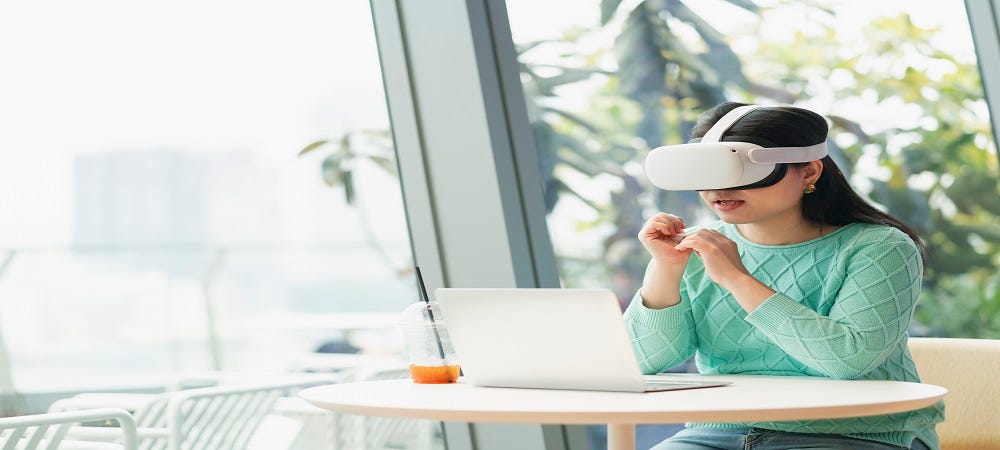Overview VR/AR, or virtual reality and augmented reality, has become one of the most talked-about upcoming technologies globally. Its continuous ascent into the eCommerce space has increased income, customer satisfaction, and brand exposure. To further add to your astonishment, the CEO of Levi’s said in 2019 that sizing will end in the next ten years. They intend to create custom-fit clothing in place of this procedure.
The industry for developing eCommerce websites exploded after this statement. Retailers are attempting to provide their customers with a seamless and error-free buying experience by integrating technologies like VR and AR into their eCommerce apps. The introduction of such ground-breaking technologies has fundamentally altered the way that firms operate.

What is Virtual Reality?
The effective application of computer technology to produce an immersive but engaging world is known as virtual reality. The head-mounted display (HMD) is among the most identifiable elements of virtual reality technology. The Oculus Rift, PlayStation VR (PSVR), and HTC Vive are the leading VR players.
How does Augmented Reality work?
Your current real-world surroundings are enhanced by a digital layer using augmented reality. Consider it as virtual reality while standing. Unlike virtual reality, augmented reality does not produce a fully immersive digital world.
VR and AR’s advantages in e-commerce
Many of the customers are unsure about whether or not to purchase a photo. This is due to the fact that occasionally a product appears great on photos but appears quite different in person. It is possible to overcome this restriction permanently by making effective use of AR and VR technology.
The Experience of Brick-and-Mortar Shopping
With the use of technology, customers can now purchase in person while lounging in their comfortable homes and tapping on their gadgets. In the virtual world, one can move around and shop as though they were in the actual store. This would enable your users to take full advantage of traditional shopping experiences while saving a significant amount of time.
Try & Purchase
We adore trying products before we buy them. By enabling customers to digitally test things, augmented reality (AR) saves them a significant amount of time and resources. This is really helpful when purchasing items like makeup, clothing, shoes, sunglasses, and more. For example, a user can determine whether a specific shoe would fit them by pointing the camera on their smartphone at their feet.
Client Contentment
This would be the main factor drawing in additional users. People’s virtual shopping experiences should release feel-good hormones, much like physical shopping does. This is not what customers expect when they shop online. Offering more than what is required of your services should be your goal. And the ideal technologies to accomplish this are AR and VR. Offering a typical in-store shopping experience will help you turn prospective customers into devoted ones.
Reduction in Returns
The inability to feel or experience a product is the main drawback of internet shopping. Consequently, it is simple for a customer to choose the incorrect size or product. The platform needs to spend a lot of money and resources in order to meet these demands.
By providing a virtual experience of the product, augmented reality enhances user ease. You can save a lot of money on operating expenses and lower the number of returns by investing in such technologies.
This concludes this thought-provoking book. Our company, Sapizon technologies , an ar vr app development company and creates expert mobile and online applications. Our goal is to enhance our clients’ businesses by developing software solutions tailored to their needs.


No comments:
Post a Comment